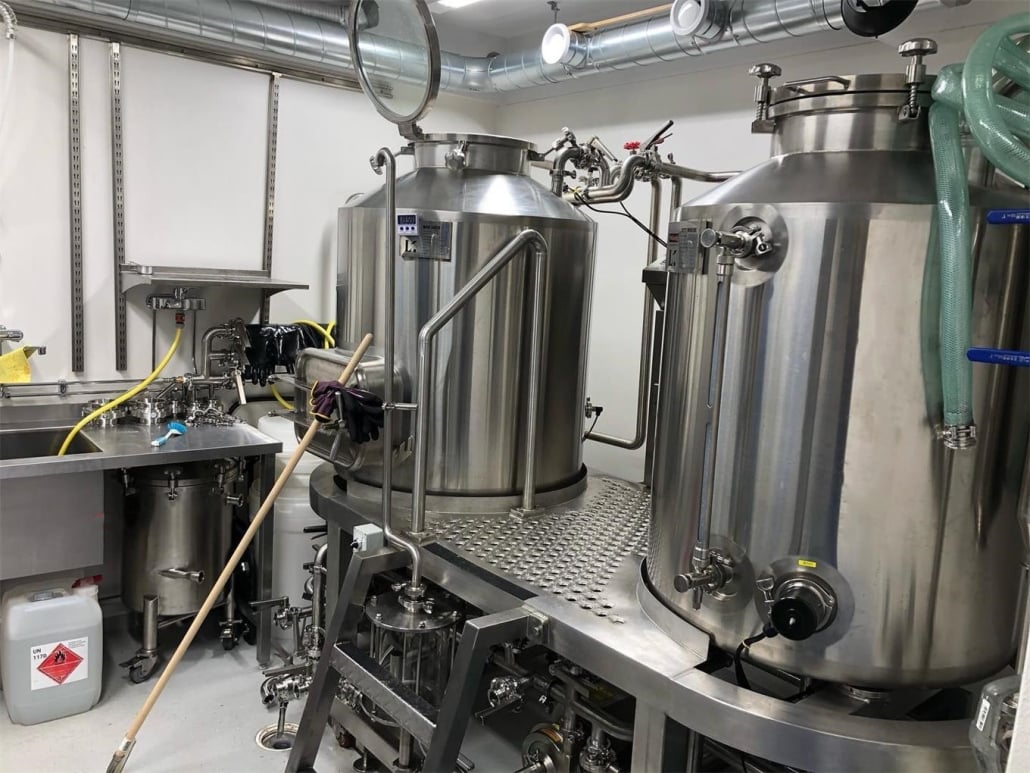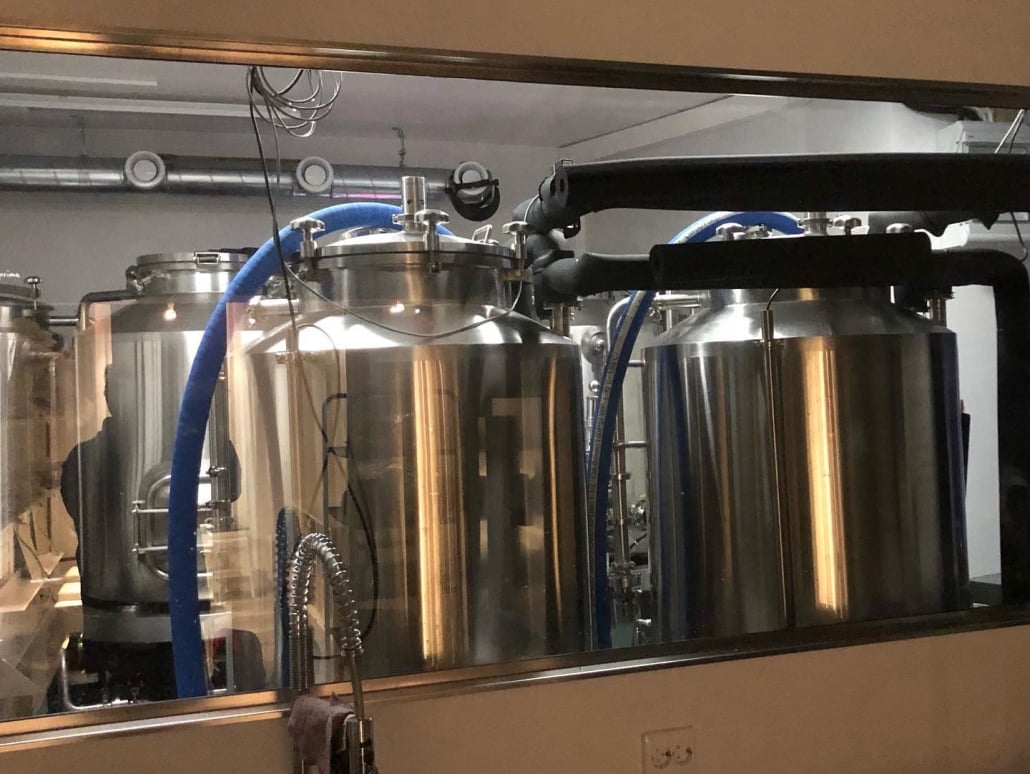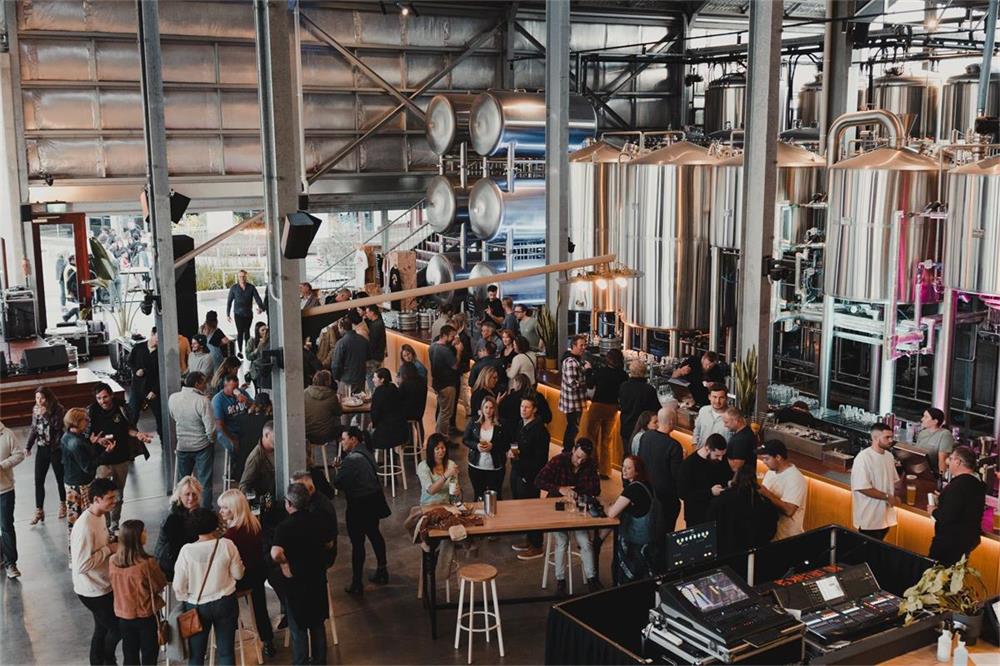Craft Beer Making Equipment
Overview: Understanding Craft Beer Making Equipment
When it comes to brewing craft beer, the right equipment can make or break the process. Whether you’re a passionate home brewer or setting up a full-scale commercial brewery, having the appropriate tools is essential. Craft beer is all about quality, control, and flavor, which means the brewing process requires precision and expertise. But don’t let that intimidate you — with the right craft beer making equipment, you can produce your own delicious beer with consistent results.
In this guide, we’ll dive into everything you need to know about craft beer making equipment, including the key tools you’ll need, a detailed equipment guide, brewing processes, customization options, pricing, and even how to choose the best suppliers. Let’s get started!
Guide to Essential Craft Beer Making Equipment
Brewing Systems Overview
Craft beer brewing systems come in a range of sizes and complexities, from simple home kits to advanced, professional-grade setups. The brewing system is the heart of the operation and includes various vessels, tanks, and accessories designed to produce beer from raw ingredients. The key components include:
- Mash tun – For mixing grain and hot water (mashing).
- Lauter tun – Used to separate wort (the liquid) from grain.
- Boil kettle – For boiling the wort and adding hops.
- Fermenters – Vessels where yeast is added, and the beer is fermented.
- Cooling systems – To lower the wort temperature before fermentation.
- Packaging equipment – Bottling or canning the final product.
Detailed Equipment Breakdown
To better understand the equipment needed for craft beer making, here’s a breakdown of each essential item:
| Equipment | Description | Function |
|---|---|---|
| Mash Tun | A large vessel where the mashing process takes place, mixing grain and hot water. | Converts starches into fermentable sugars to create wort. |
| Lauter Tun | A vessel used to separate the solid grain husks from the liquid wort. | Helps clarify wort and extracts sugars from the grain. |
| Boil Kettle | A large kettle where the wort is boiled, and hops are added. | Sterilizes the wort and adds bitterness, flavor, and aroma through the addition of hops. |
| Fermenters | Tanks where yeast is introduced to the wort for fermentation. | Converts sugars into alcohol and carbon dioxide, creating beer. |
| Cooling System | A heat exchanger or chiller that cools the hot wort after boiling. | Rapidly cools the wort to a temperature where yeast can be safely added. |
| Packaging System | Bottling or canning lines, sometimes kegging systems. | Used to transfer the finished beer into bottles, cans, or kegs for distribution and storage. |
| Cleaning Equipment | Specialized tools for cleaning tanks, lines, and vessels. | Ensures that all equipment remains sanitary to prevent contamination of the beer. |

Craft Beer Brewing Process: A Step-by-Step Guide
Now that we’ve discussed the key equipment involved in craft beer making, let’s walk through the process step-by-step. Each stage is vital to producing a consistent, flavorful brew.
1. Milling the Grains
Before brewing begins, the malted barley needs to be milled to crack the husks and expose the starchy interior. The consistency of the grind can affect the efficiency of the mash, so this is a critical first step.
2. Mashing
In the mash tun, the milled grains are mixed with hot water. This process, called mashing, converts the starches in the grains into fermentable sugars. The temperature and time of the mash can influence the beer’s body and sweetness.
3. Lautering
After mashing, the wort (liquid) needs to be separated from the grain. This is done in the lauter tun, where the grain bed acts as a natural filter. The resulting wort is then collected and prepared for the next step.
4. Boiling
The wort is boiled in a kettle, and hops are added at various stages for bitterness, flavor, and aroma. Boiling also helps sterilize the wort, removing any unwanted bacteria or wild yeast.
5. Cooling
The wort must be cooled quickly after boiling to prevent contamination and prepare it for fermentation. This is done using a heat exchanger or an immersion chiller.
6. Fermentation
Once cooled, the wort is transferred to fermenters, where yeast is added. The yeast consumes the sugars, producing alcohol and carbon dioxide. Depending on the style of beer, this process can take anywhere from a few days to several weeks.
7. Packaging
After fermentation is complete, the beer is carbonated and packaged. This could be in bottles, cans, or kegs, depending on your setup and distribution plans.
Craft Beer Brewing Equipment Customization
Craft breweries, whether home or commercial, can customize their brewing systems in various ways. Depending on the size of the brewery, the space available, and production needs, you might need a more personalized layout. Here’s what to consider when customizing your brewing system:
| Customization Aspect | Details | Impact on Brewing |
|---|---|---|
| Capacity | Ranges from 5-gallon homebrew setups to 30-barrel (BBL) commercial systems. | Affects the volume of beer you can produce per batch. |
| Space Requirements | Systems can be compact or require large floor space. | Consider ceiling height, floor drains, and workflow when designing a brewing layout. |
| Design and Layout | Tanks and vessels can be arranged for efficiency and aesthetics. | Good layout improves workflow, safety, and ease of cleaning. |
| Material Options | Stainless steel is standard, but copper and plastic are sometimes used. | Stainless steel is durable, easy to clean, and doesn’t react with beer. |
| Automation vs Manual | Advanced systems offer more automation, while simpler setups are manual. | Automation can improve consistency and reduce labor but comes at a higher initial cost. |
| Heating Methods | Steam, electric, and gas options are available for heating the mash and boil kettles. | Affects energy efficiency, upfront cost, and long-term operating expenses. |
Price Ranges for Craft Beer Brewing Equipment
The cost of brewing equipment can vary greatly depending on the size, customization, and whether it’s for home or commercial use. Below is a general pricing table for different types of equipment:
| Type of Equipment | Price Range (USD) | Notes |
|---|---|---|
| Homebrew Systems | $200 – $5,000 | Entry-level kits to semi-professional setups. |
| Small Commercial | $20,000 – $100,000 | Designed for microbreweries producing small batches. |
| Medium Commercial | $100,000 – $300,000 | Suitable for breweries expanding to regional distribution. |
| Large Commercial | $500,000 – $1,000,000+ | Industrial setups capable of large-scale production for national markets. |
Keep in mind that these costs do not include installation, utilities, or ongoing maintenance.
Choosing the Right Supplier for Craft Beer Making Equipment
When it comes to choosing the right supplier, there are several factors to consider. Here’s a detailed breakdown to help guide your decision-making process:
| Supplier Factor | Details |
|---|---|
| Reputation and Reviews | Look for suppliers with good reviews from other breweries. A good reputation is key to reliability. |
| Customization Options | Some suppliers offer more customization than others. |
| Price vs Quality | Ensure you’re getting good value. Cheap equipment can end up costing more in the long run due to repairs. |
| Support and Training | Suppliers that offer training or ongoing support can help you troubleshoot any problems. |
| Lead Time | Some suppliers may take longer to deliver than others. Make sure their schedule aligns with your project timeline. |
How to Install, Operate, and Maintain Craft Beer Brewing Equipment
Once you’ve purchased your craft beer brewing equipment, proper installation, operation, and maintenance are essential to ensure a long lifespan and consistent production. Here’s what you need to know:
| Task | Details |
|---|---|
| Installation | Requires professional assistance, especially for larger systems involving plumbing and electrical work. |
| Operation | Follow manufacturer guidelines for each piece of equipment. Training is often recommended. |
| Maintenance | Clean equipment after every brew session to avoid contamination. Replace worn parts promptly. |
| Safety Protocols | Ensure all equipment is up to code and that safety protocols are followed during operation. |
Advantages and Disadvantages of Craft Beer Making Equipment
Each brewing system comes with its own set of advantages and limitations. Here’s a comparison to help you weigh your options:
| Advantages | Disadvantages |
|---|---|
| Customization – Allows for personalized systems tailored to your needs. | Cost – High initial investment for commercial systems. |
| Efficiency – Advanced systems improve brew consistency and quality. | Complexity – More advanced setups require more expertise to operate. |
| Scalability – Can expand production as needed. | Space – Larger systems require more space and infrastructure. |

FAQs
| Question | Answer |
|---|---|
| What equipment do I need to brew beer at home? | You’ll need a mash tun, boil kettle, fermenter, and bottling equipment at a minimum. |
| How much does a commercial brewing system cost? | Commercial systems can range from $20,000 for small setups to over $1 million for large, automated systems. |
| Can I customize my brewing equipment? | Yes, many suppliers offer customization options to fit your brewing space and needs. |
| Is brewing beer at home difficult? | It can be as simple or complex as you want it to be. Home kits make it easier for beginners. |
| How often do I need to clean my equipment? | After every brewing session to ensure proper sanitation and prevent contamination. |
In conclusion, whether you’re a hobbyist homebrewer or an aspiring craft beer entrepreneur, the right brewing equipment can make all the difference. This guide has covered the essentials — from understanding each piece of equipment, to how to customize, install, and maintain your setup.
Additional FAQs on Craft Beer Making Equipment (2025)
1) What brewhouse configuration is most efficient for small craft breweries?
- A compact 3-vessel setup (mash/lauter + dedicated kettle/whirlpool) balances CAPEX and throughput, enabling 2–3 turns/day with heat recovery and VFD pumps.
2) Should I choose steam, electric, or direct fire for my boil kettle?
- Steam offers best control and uniform heating at scale; electric is clean and simpler to permit for smaller systems; direct fire is lowest CAPEX but less efficient and harder to control.
3) How do I size a glycol chiller for my fermenters?
- Rough rule: 1–1.2 kW of cooling per active 10 hL tank during peak fermentation; add 20–30% headroom for crash cooling and future tanks.
4) What QA equipment is essential before buying a canning line?
- pH meter, densitometer/hydrometer, dissolved oxygen (DO/TPO) meter, microscope + hemocytometer, carb/CO2 measurement, and seam micrometer or third-party seam audits.
5) How can I future-proof my craft beer making equipment layout?
- Pre-plumb utility stubs (steam/electric/glycol), leave space for an extra FV and brite tank, install cable trays and PLC-ready I/O, and choose valve sizes compatible with later automation.
2025 Industry Trends in Craft Beer Making Equipment
- Energy recovery by default: wort-to-HLT heat exchangers and vessel insulation delivering 15–25% thermal savings.
- Data-first brewhouses: native OPC UA/Modbus connectivity, batch logging, guided CIP, and predictive maintenance via sensors.
- Oxygen management: low-oxygen (LOX) hot-side practices and inline DO targets extend shelf life of hop-forward beers.
- Modular skids and faster installs: pre-piped, pre-wired systems cut commissioning time; typical lead times 12–24 weeks.
- Sustainability incentives: utilities and grants supporting VFDs, high-efficiency boilers, and water reuse systems.
2025 Benchmarks and KPIs for Craft Beer Equipment
| Metric (2025) | Typical Range/Target | Notes/Source |
|---|---|---|
| Brewhouse efficiency (extract) | 85–92% | Dependent on crush, lauter design |
| Water use per hl beer | 3.5–5.5 hl/hl | With recovery/reuse programs |
| Thermal energy per hl | 18–28 kWh(th)/hl | With heat recovery and insulation |
| Knock-out DO (post heat exchanger) | <50–150 ppb | Lower targets for LOX setups |
| Turn time per batch (hoppy beer) | 4.5–6.0 hours | Includes whirlpool + knock-out |
| Core equipment lead time | 12–24 weeks | OEM disclosures 2025 |
| Inline DO during transfers | <30–80 ppb | BA/ASBC guidance |
| Preventive maintenance cadence | Quarterly CIP validation; annual PRV/gasket replacement | OEM + QA best practice |
Selected sources: Brewers Association sustainability and QA resources; ASBC Methods of Analysis; OEM white papers/specs (GEA, Krones/Steinecker, Specific Mechanical, Portland Kettle Works, ProBrew); industry press (BrewBound, Craft Brewing Business) 2024–2025.
Latest Research Cases
Case Study 1: Heat Recovery Upgrade Cuts Utilities and Improves Throughput (2025)
- Background: Regional craft brewery faced rising gas costs and long knock-out times on hoppy beers.
- Solution: Added wort-to-HLT heat recovery, upgraded plate heat exchanger to two-stage (city water + glycol), insulated vessels, and VFDs on pumps.
- Results: Thermal energy per hl down 21%; knock-out time reduced by 15 minutes per batch; annual capacity increased ~9% without adding tanks.
Case Study 2: Oxygen Control Extends IPA Shelf Life (2024)
- Background: Small packaging brewery reported hop aroma fade and increased returns at 60 days.
- Solution: Implemented LOX practices (deaerated liquor, sealed lauter runoff, N2 whirlpool blanket), inline DO monitoring, and closed transfer to brite and filler; instituted seam audits.
- Results: Knock-out DO median dropped from 180 ppb to 65 ppb; package TPO improved; sensory shelf life extended ~4 weeks at 4°C; returns decreased by 40%.
Expert Opinions
- Tom Shellhammer, Ph.D., Professor of Fermentation Science, Oregon State University
- Viewpoint: “Hot-side oxygen control and trub management are primary levers for flavor stability—equipment choices that enable both will pay back quickly.”
- Source: Academic talks and brewer workshops, 2024–2025
- Mary Pellettieri, QA Consultant; Author of Quality Management for Craft Beer
- Viewpoint: “Measure what matters—DO/TPO, carbonation, and seam integrity. Tie equipment SOPs to data so quality decisions aren’t guesswork.”
- Source: QA seminars and consulting, 2024–2025
- John Mallett, Brewing Operations Expert and Author
- Viewpoint: “Design for maintenance and safety from day one. Hygienic piping, accessible manways, and validated CIP reduce downtime and risk.”
- Source: Operations guidance and industry panels, 2024–2025
Practical Tools and Resources
- Brewers Association: QA, safety, sustainability toolkits — https://www.brewersassociation.org
- ASBC Methods of Analysis (oxygen, carbonation, sensory) — https://www.asbcnet.org
- OEM engineering/white papers (GEA, Krones/Steinecker) — https://www.gea.com | https://www.krones.com
- Specific Mechanical, Portland Kettle Works (equipment specs/case studies) — https://specificmechanical.com | https://portlandkettleworks.com
- DOE Pumping System Assessment Tool (VFD/energy sizing) — https://www.energy.gov
- Anton Paar instrumentation (DO/TPO, CO2, density) — https://www.anton-paar.com
- ProBrewer community (layout, utilities, CIP best practices) — https://www.probrewer.com
Note: Verify utility loads (steam/electric, water, glycol), drainage and floor loading, and pressure vessel certifications (ASME/CE). Specify sanitary weld standards, PRV sizing/calibration, and CIP coverage validation. Plan expansion capacity for future fermenters and packaging lines.
Last updated: 2025-09-29
Changelog: Added 5 targeted FAQs, 2025 trend insights with KPI table, two equipment-focused case studies, expert viewpoints, and vetted tools/resources tailored to craft beer making equipment selection and optimization
Next review date & triggers: 2026-03-31 or earlier if OEM lead times/energy benchmarks shift materially, BA/ASBC oxygen or water KPIs update, or major incentives for efficiency equipment are introduced
Share this entry
Interested in learning more about Brewing Systems including additional details and pricing information? Please use the form below to contact us!
YOLONG BREWERY EQUIPMENT FAQS
- Commercial Brewery / Craft Brewery / Microbrewery / Nanobrewery
- What is The Difference Between Craft Beer and Industrial Beer?
- The Bespoke Differences In Custom Brewing Systems
- Everything You Need to Know About Kettle Souring
- How to Choose Brewing Equipment for Your business?
- How To Choose The-Best Partner To Build Your Commercial Microbrewing System?
- Two Detection Sensors That You Need To Use In Your Brewhouse System
- Remote Control Applications in Brewing Equipment/How does it work?
- How To Clean Your Brand New Brewery Tanks?

